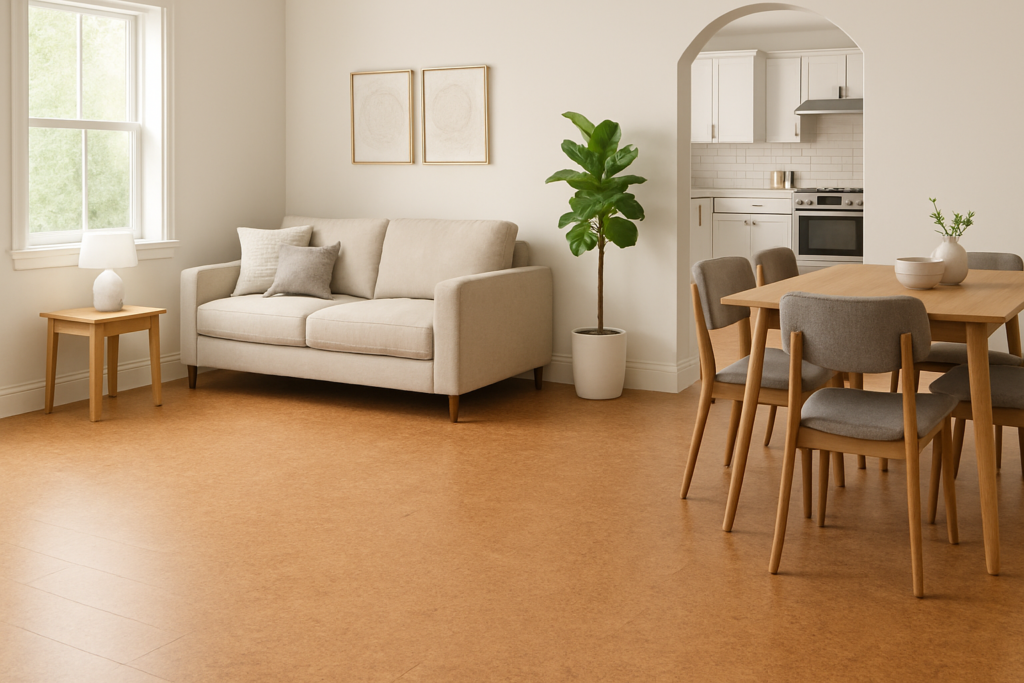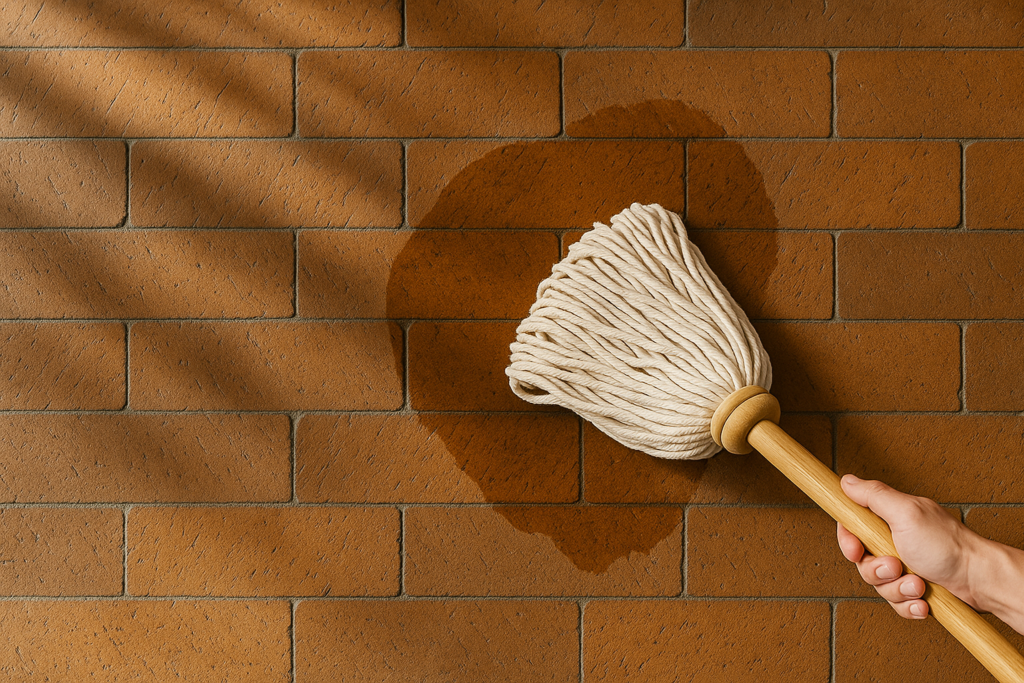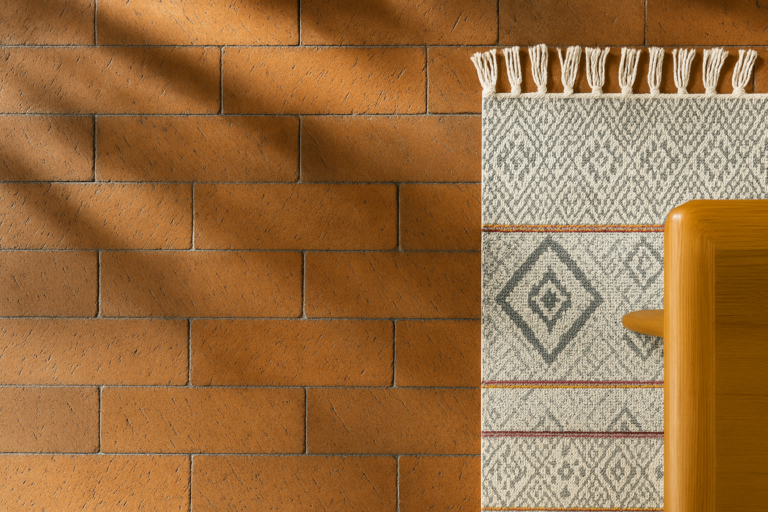
Brick flooring is making a strong comeback in the world of interior and exterior design. Valued for its earthy charm, old-world aesthetics, and dependable durability, brick is now being used far beyond patios and walkways. It’s not just for outdoor spaces anymore—modern homes and businesses are embracing brick floors for kitchens, entryways, basements, and more.
Table of Contents
ToggleBut is brick flooring the right choice for your project? This in-depth review explores every major factor: from cost, maintenance, and installation to how it stacks up against terracotta tiles. Whether you’re a homeowner, builder, or designer, this guide will help you make an informed decision.
Pros and Cons of Brick Flooring
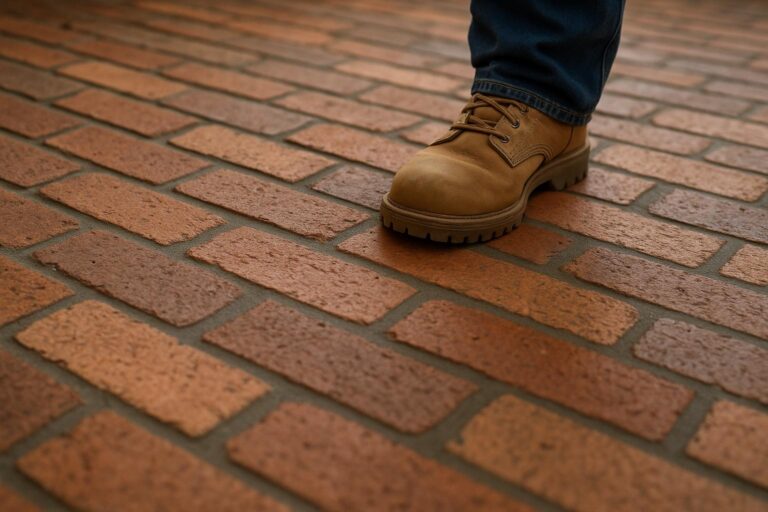
Advantages of Brick Flooring
1. Lasting Durability
Brick flooring is tough and resistant to wear. It’s made from fired clay, which results in a dense and sturdy material capable of handling high foot traffic. This makes it ideal for both indoor and outdoor areas.
2. Natural, Rustic Appeal
Brick adds a timeless, warm aesthetic that works well in rustic, farmhouse, and even industrial-themed interiors. Its color palette—ranging from deep reds to soft browns—gives spaces a cozy, grounded look.
3. Eco-Friendly Option
Since bricks are made from clay and shale, both of which are natural materials, they are considered environmentally friendly. Many manufacturers also offer reclaimed brick, which reduces environmental waste.
4. Low-Slip Surface
The texture of brick naturally provides traction, making it safer in wet conditions, such as in mudrooms, patios, or kitchens.
5. Fire Resistance
Brick is non-combustible. In areas where fire resistance is a concern—like outdoor kitchens or fireplaces—brick flooring offers a high degree of safety.
6. Thermal Mass Capabilities
Brick stores heat during the day and slowly releases it at night. This can help moderate indoor temperatures and potentially reduce heating costs.
Disadvantages of Brick Flooring
1. Unforgiving Underfoot
Brick can be hard on your feet, especially if you’re standing for long periods. It’s not as comfortable as wood or vinyl unless softened with area rugs.
2. Moisture Sensitivity
Although brick is durable, it is also porous. Without proper sealing, it can absorb water and stains. This makes sealing and ongoing maintenance essential, especially indoors.
3. Cold Surface
Brick tends to feel cold underfoot in winter. While it performs well in hot climates, in colder regions, this may require underfloor heating or rugs for comfort.
4. Difficult Installation
Installing brick flooring can be more involved than laying ceramic tile or hardwood. It requires leveling, spacing, and potentially mortar setting, making DIY efforts challenging for beginners.
5. Weight Consideration
Bricks are heavy, and not all subfloors can handle the added weight without reinforcement. This can be a concern in multi-story buildings or older homes.
Cost of Brick Flooring
When budgeting for brick flooring, the total cost includes both the materials and installation. Here’s a breakdown:
• Material Cost: The price for brick pavers ranges from $3 to $10 per square foot, depending on quality, size, and brand.
• Installation Cost: Hiring a professional for installation can cost between $4 and $12 per square foot. This includes surface preparation, laying, and sealing.
• Overall Price Range: Expect a full project to cost between $7 and $22 per square foot installed.
Although this is more than some alternatives (like laminate or vinyl), brick’s lifespan and durability often make it a cost-effective long-term choice.
Maintenance and Repair of Brick Floors
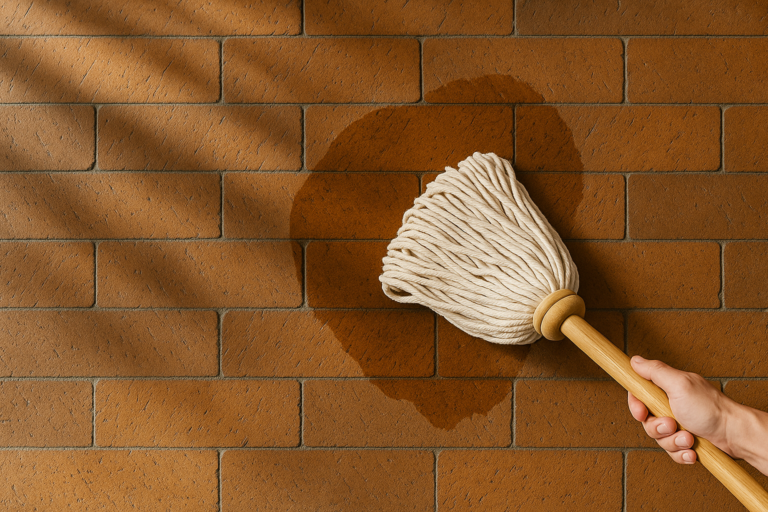
Routine Maintenance
1. Regular Cleaning: Sweep regularly to prevent dirt from collecting in the crevices. Use a vacuum cleaner with a brush attachment to get into the grout lines.
2. Mopping: Use a mild, pH-balanced cleaner and damp mop. Avoid acidic solutions like vinegar that can erode the brick’s surface or sealer.
3. Sealing: Brick must be sealed to resist stains and moisture. Sealants are typically reapplied every 2 to 3 years, depending on traffic.
Maintenance and Repair of Brick Floors
• Replacing Damaged Bricks: If a brick cracks or chips, it can be individually removed and replaced. This is easier than replacing large panels like tile or hardwood.
• Re-Grouting: Over time, grout can wear down and may need to be topped up or replaced to maintain structural stability and cleanliness.
• Stain Removal: For oil or grease stains, specialized masonry cleaners are available. Prompt action prevents long-term discoloration.
Design and Aesthetic Options
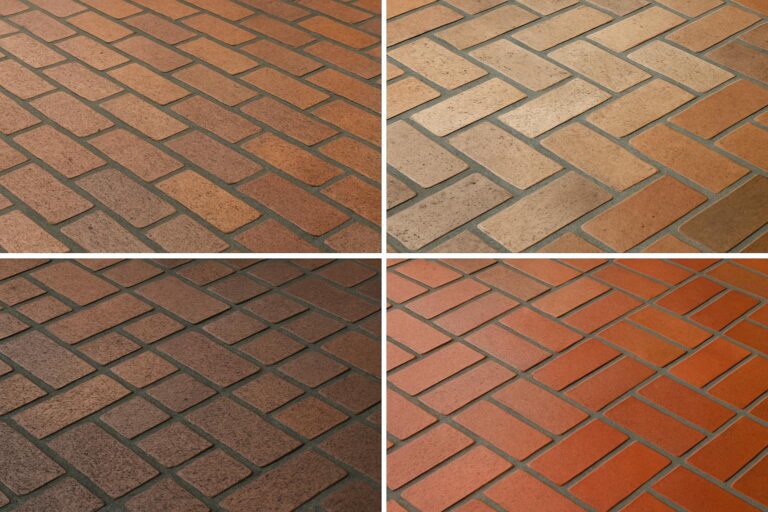
Brick floors are versatile in both appearance and layout. They bring character and visual depth that you can customize to your home’s theme.
Pattern Choices
• Herringbone: Ideal for upscale looks and visual movement.
• Running Bond: A classic brick-laying pattern, good for long narrow spaces.
• Basketweave: Vintage and charming, excellent for traditional or country-style homes.
• Stack Bond: Offers a more modern and minimalist appeal.
Color Options
Natural brick comes in shades of red, brown, orange, and gray. Some manufacturers even offer painted or whitewashed bricks for modern interiors.
Finish Types
• Matte: Raw and natural, popular in rustic themes.
• Glossy Seal: Provides a sleek, contemporary finish.
• Textured: Adds grip and visual depth, particularly useful in high-traffic areas.
Installation Process
Installing a brick floor is complex but can be tackled professionally or as an ambitious DIY project with preparation.
Steps to Install Brick Flooring
1. Subfloor Preparation: Ensure it’s flat, dry, and strong enough to support brick weight.
2. Layout Design: Plan the pattern and orientation before setting bricks.
3. Adhesive Application: Use thin-set mortar or bonding adhesive.
4. Laying the Bricks: Start from the center and work outward. Use spacers for consistency.
5. Grouting: Fill in gaps after adhesive cures.
6. Sealing: Allow grout to dry, then apply sealer to protect from water and stains.
Due to the precision needed, hiring a flooring contractor is recommended for most installations.
Top Brands for Brick Flooring
When shopping for high-quality brick flooring, consider these trusted names:
1. Old Mill Brick – Offers classic thin brick in multiple shades and patterns. Known for DIY-friendly products.
2. McNear Brick & Block – Eco-conscious company with reclaimed and new brick pavers.
3. General Shale – Offers traditional and contemporary brick with high durability.
4. Acme Brick – One of the most established names in brick manufacturing with wide product availability.
5. Glen-Gery – High-end brick options with a focus on architectural beauty and strength.
Comfort and Practical Use
While brick has undeniable appeal, comfort is something to consider.
• Feel Underfoot: Hard and potentially uncomfortable for long use. Consider using kitchen mats, rugs, or padded inserts.
• Temperature Regulation: Great for hot climates; may feel cold in winter without radiant heat.
• Noise Level: Like tile, brick reflects sound. Rugs and soft furnishings can help absorb echoes.
• Allergy-Friendly: Unlike carpet, brick doesn’t trap dust, making it a solid option for allergy sufferers.
Brick Flooring vs. Terracotta Tile: A Detailed Comparison
While both brick and terracotta offer a rustic, earthy charm, they have distinct properties. Here’s how they compare:
| Feature | Brick flooring | Terracotta Tile |
|---|---|---|
| Material | Fired clay bricks | Natural red or brown clay tiles |
| Durability | Extremely tough, long- lasting | Softer, more fragile |
| Water Resistance | Needs sealing, moderately porous | Highly porous,must be sealed well |
| Aesthetics | Rough, rustic, industrial | Smooth , warm Mediterranean |
| Comfort | Hard and cold | Slightly Softer underfoot |
| Maintenance | Low with sealing | Higher maintenance |
| Installation | More complex | Easier to lay with tile adhesives |
| Cost | $7-$22 per sq.ft. installed | $5-$15 per sq.ft installed |
| Use Case | Indoor and outdoor , high traffic | Mostly indoor, decorative floors |
Conclusion: Choose brick for durability and outdoor use. Opt for terracotta for warm aesthetics in cozy indoor settings.
Is Brick Flooring Right for You?
Consider brick flooring if:
• You want a durable, low-maintenance floor that can handle lots of wear.
• Your design aesthetic leans toward rustic, traditional, or industrial.
• You’re installing in an entryway, mudroom, kitchen, patio, or sunroom.
• You’re comfortable with occasional resealing and cleaning.
Avoid brick if:
• You want a soft, quiet, or warm floor underfoot.
• You’re working with a tight budget or unsupported subfloor.
• You prefer a sleek, modern look that brick may not provide.
Final Thoughts
Brick flooring is a blend of tradition, style, and toughness. It isn’t for everyone—but when it fits, it offers unbeatable character and resilience. Whether you’re remodeling a farmhouse kitchen or upgrading a patio, brick can be the strong, beautiful foundation that pulls your design together.
If you want timeless style that lasts generations, brick flooring may be your perfect match.

